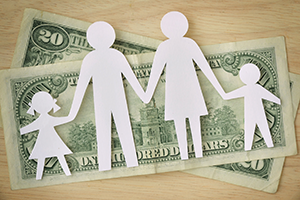New Tax Breaks Benefit Millions
What you need to know
The recently-passed American Rescue Plan Act contains several tax breaks for you and your family. Here are the major provisions of the bill that could mean more money in your pocket during the 2021 tax year.
Child tax credit (CTC)
- The CTC for 2021 increases from $2,000 to $3,000 for kids ages 6 to 17 and $3,600 for kids ages 5 and under.
- To receive the full tax credit your adjusted gross income must be under $75,000 (Single); $150,000 (Joint); or $112,500 (Head of Household).
- If your income is above the aforementioned thresholds, you can still receive $2,000 per child if your income is less than $200,000 (Single, Head of Household); or $400,000 (Joint).
- You can receive up to 50% of your 2021 child tax credit in 6 monthly payments starting July 2021. The IRS is warning, however, that this July start date may be delayed because a computer system still has to be built to handle these monthly payments.
Child and dependent care credit (DCC)
 If you and your spouse work and have children in daycare, or have an adult that you care for, you may be eligible for a larger tax credit in 2021.
If you and your spouse work and have children in daycare, or have an adult that you care for, you may be eligible for a larger tax credit in 2021.
- You can now spend up to $8,000 in dependent care expenses for one qualifying dependent and get a 50% tax credit. This results in a maximum credit of $4,000 (up from $1,050).
- If you have more than one qualifying dependent, you can spend up to $16,000 in dependent care expenses and get a 50% credit. This results in a maximum credit of $8,000 (up from $2,100).
- To receive the full tax credit, your adjusted gross income must not exceed $125,000.
- Dependents can include people of all ages, not just kids, as long as they meet the dependent qualifications.
Earned income tax credit
- If you’re a household with no kids, the maximum earned income tax credit increases from $543 to $1,502.
- More taxpayers qualify for the credit. The lower age limit for receiving the credit decreases from age 25 to age 19. The upper limit of 65 for receiving the credit is eliminated. There is no upper age limit for 2021.
- You may use either your 2019 income or your 2021 income when calculating your credit to obtain the maximum credit.
Stimulus checks
- A third round of stimulus payments in the amount of $1,400 is being sent to qualified taxpayers.
- The payment phases out for income over $75,000 for single taxpayers, $112,500 for head of household taxpayers and $150,000 for married couples.
Action to take
- Look for updates on the advance payments for the child tax credit. The IRS is sorting out how to get half of your child tax credit to you in 2021. Stay tuned for updates as to whether the payments will begin in July or if they will be delayed. You may also opt out of this early payment, but will need to wait for instructions on how to do so.
- Consider increasing dependent care expenses. Look ahead to the rest of 2021 and consider if you should increase your dependent care expenses to take advantage of the significant increase in this credit. If you increase your dependent care expenses in 2021, remember you won’t be able to include the same amount of expenses when calculating your credit in 2022, as this tax credit increase is currently for 2021 only.
- Conduct a tax forecast. With the dramatic increase in these credits, you may want to estimate next year’s tax bill. It may make sense to adjust your withholdings to account for a lower tax obligation.
- Be conservative when forecasting your earned income tax credit. It is uncertain how the expanded earned income tax credit will impact those over 65 when you have no children. For example, are Social Security benefits considered earned income when calculating the earned income tax credit? Does the larger standard deduction for those over 65 affect the earned income tax credit calculation? Until clarification is issued by the IRS, you may wish to be conservative about the credit amount you’ll receive.

